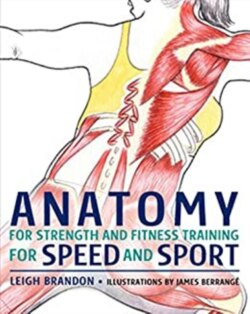Читать книгу Anatomy for Strength and Fitness Training for Speed and Sport - Leigh Brandon - Страница 5
На сайте Литреса книга снята с продажи.
HOW TO USE THIS BOOK
ОглавлениеAnatomy for Strength and Fitness Training for Speed and Sport is a visual, anatomical and textual analysis of effective exercises that will help you in your chosen sporting field. It is also a guide on how to do the exercises and how to safely and effectively develop speed for your particular sport. The book has three distinct parts: the first is a basic introduction to anatomical definitions, terminology and an overview of the development of speed. Essentially it helps to demystify the language used in part two, making it easier to follow the instructions in that section.
Part two contains five sections: section one covers stretching and warm-up, section two covers ‘the core’, section three covers Primal Pattern® Movements, section four covers maximal strength and power development and section five covers agility, plyometric and speed drills. Within each section, the individual exercises or drills featured are defined and given some background. There is a ‘how to’ guide for doing the exercise, as well as a visual and technical exercise analysis of the main muscles that are working. The start or finish position is usually depicted and training tips may be included.
Part three helps you to understand how you might put these exercises together into a programme over a season to achieve optimal speed and performance.
The adult human body has 639 muscles and 206 bones; this book illustrates approximately 92 muscles involved in movement and stabilization. Many smaller muscles, including the deep, small muscles of the spine and jaw and most muscles of the hands and feet are not given specific attention, in order not to confuse the reader.
This book has been designed to help you to improve your speed in your chosen sport. Before introducing speed training, the body has to be prepared to handle the loads or stress put on the body during such training. Therefore, it is advised that the sections are completed in the following order:
1. Primal Pattern® Movement beginner exercises
2. Primal Pattern® Movement intermediate exercises
3. Primal Pattern® Movement advanced exercises
4. Maximal strength training
5. Power training
6. Speed/agility/plyometric drills
The length of time spent in each phase is dependent on your level of training experience. The more experience you have in training and the stronger you are, the less amount of time you need to spend in each phase. It is advised that you should have one to two years of resistance training before commencing ‘maximal strength’ training.
Many of the exercises have a degree of risk of injury if done without adequate instruction and supervision. We recommend that you have a thorough assessment with a certified strength and conditioning coach, C.H.E.K practitioner or personal trainer before undertaking any of the exercises, and that you seek qualified instruction if you are a complete beginner. This book does not constitute medical advice and the author and publisher cannot be held liable for any loss, injury or inconvenience sustained by anyone using this book or the information contained in it.
